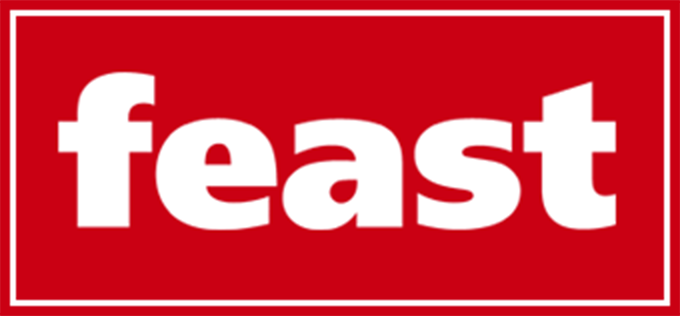Awe has always hovered at the periphery of human experience, waiting to be noticed in unexpectedly fleeting moments. Awe, according to Berkeley psychologist Dacher Keltner, is a basic feeling that connects us to something bigger than ourselves rather than a mystical luxury. He has studied it for more than 20 years, creating a scientific link between thankfulness and goosebumps. His studies have been incredibly successful in demonstrating that awe transforms rather than just inspires.
With an accuracy that feels both poetic and scientific, Keltner has charted the emotional landscape of awe by fusing psychology, narrative, and even art. According to him, it’s the emotion we get when we come across something big and enigmatic that defies our comprehension. He clarifies that wonder is the mind’s subsequent desire to investigate that vastness. Once you begin to notice that distinction in everyday life, it becomes remarkably evident, despite its subtlety. That silent self-recalibration can be evoked by seeing your child sleep, listening to a choir sing in unison, or catching sunlight through the dust of the city.
His work has gained significant traction over time among those looking to treat contemporary fatigue. Moral beauty, nature, collective energy, music, visual design, spirituality, life and death, and revelation are the eight sources of awe that Keltner identified. He claims that anyone who is able to pay attention falls into these categories; they are not just for poets or pilgrims. He notes that people are most frequently moved by simple acts of kindness, such as a stranger helping a stranger on the street or a nurse tending to a patient, rather than by striking scenery.
| Aspect | Description |
|---|---|
| Core Theme | Exploring how awe and wonder can transform daily experiences and mental health. |
| Key Figures | Dacher Keltner (UC Berkeley psychologist), Ingrid Barreneche (artist), Catherine L’Ecuyer (author). |
| Key Idea | Awe is an essential emotional state that reconnects people with meaning, humility, and joy. |
| Benefits | Reduces anxiety, increases empathy, improves creativity, and enhances gratitude. |
| Practical Ways | Awe walks, playful habits, slowing down, reconnecting with nature and others. |
| Cultural Links | Seen in art, music, film, and celebrity mindfulness movements. |
| Reference | Los Angeles Times – “Feeling Drained? Here’s How to Rediscover Your Childlike Wonder” |

Awe serves as a sort of emotional detox for many, clearing the clutter that distorts perception. Regular practice has significantly improved its effects. Researchers have discovered that experiencing awe lowers stress hormones, increases compassion, and even calms the parts of the brain linked to self-criticism. Through a completely different path—one that depends on connection rather than solitude—the outcome is a remarkably similar mental state to what meditation produces.
Awe has become something of a common goal in popular culture. This return to wonder feels communal, as evidenced by wellness influencers recording “awe walks” and by celebrities like Chris Hemsworth and Oprah Winfrey sharing their silent moments of gratitude in the outdoors. Even well-known musicians and artists are turning to awe as a counterbalance to overstimulation, such as Brian Eno, who creates ambient soundscapes intended to “decelerate thought.” Their research demonstrates how, after years of digital compression, the human mind longs for quiet expansion.
This change is a perfect fit for Keltner’s research. He frequently brings to mind a straightforward but eye-opening experiment in which participants drew self-portraits after viewing either the expansive Yosemite Valley or a busy urban scene. Smaller portraits of themselves were consistently drawn by those facing the valley. The lesson is timeless: humility takes over and our egos shrink when faced with immensity. He contends that humility is an emotional reminder that our stories are a part of something ongoing, not about insignificance.
His findings have been echoed by both scientists and artists. Ingrid Barreneche, a painter, says she experiences wonder every day, a “gut feeling” when she picks ripe starfruit from her backyard tree or feels the sun on her face. Her reflection reflects Keltner’s main idea, which is that if we make room for it, awe can arise from simplicity. Building on that idea, author Catherine L’Ecuyer refers to wonder as “the desire to know.” It flourishes, in her opinion, when adults cease to take their environment for granted and when friendship, love, and beauty are discovered every day.
Keltner acknowledges that even suffering can bring back awe during lengthy discussions about grief. Following the death of his brother, he became aware of the way that wonder and grief merged to produce an unforeseen cycle of healing. When grieving, a lot of people notice the same pattern: when love for the deceased turns into a bond with something lasting, and when tears turn into thankfulness. According to Keltner, it is the manifestation of moral beauty.
Additionally, his research has revealed how awe transforms community. Sociologist Émile Durkheim once referred to large gatherings, such as concerts and rallies, as “collective effervescence.” When thousands of fans chant at a sporting event or when an audience moves as one during a song, you can sense it. It’s a physiological balance that goes beyond personal attention. People still yearn for shared transcendence as a means of healing, as evidenced by the success of large-scale tours like Coldplay’s “Music of the Spheres” and Beyoncé’s Renaissance.
Another type of rediscovered wonder that is gaining new scientific attention is play. Stuart Brown of the National Institute for Play discovered that optimism and creativity frequently wane when play is absent from daily life. According to his research, adults who regularly participate in playful activities—from dancing to pottery—are considerably happier and more adaptive. He refers to play as “a birthright,” a means of preserving curiosity as life gets more complicated.
Play and awe have a relationship that can be especially advantageous for mental health. Neighborhoods in Los Angeles have become living sculptures of color and reflection thanks to the efforts of artists like Randy King Lawrence. Phantasma Gloria, his installation, shimmers throughout Echo Park like a visual hymn to happiness. It’s common for visitors to say that they feel lighter after leaving his yard, as though they’ve briefly overcome their cynicism. Despite being anecdotal, those responses support the findings of psychologists: awe and creativity are twin currents of vitality.
Wonder can be fostered by even modest rituals. Keltner suggests taking daily “awe walks,” a practice that wellness initiatives all over the world have now embraced. People train their perception to be grateful by walking slowly and paying attention to the rhythm of footsteps, the play of light, or the curve of a leaf. The exercise is very effective at releasing emotional tension and grounding attention. It requires more openness than effort. “Awe tells you what’s sacred to you, and you will protect what’s sacred,” says Keltner.
That way of thinking is applicable to everything from neuroscience to environmental activism. Awe-prone people are more likely to act empathetically and responsibly toward the environment. They see interdependence as a strength rather than a weakness. The feeling turns into a silent instructor, reminding us that importance and smallness can coexist.
This rediscovery of wonder represents a significant change in society. Awe appears as an anchor—a way to slow time without halting progress—as digital culture speeds up and anxiety increases. The extraordinary can exist in a well-timed laugh, a nighttime drive under the stars, or the steady breathing of someone sleeping next to you. People are discovering that the extraordinary does not always require elevation or spectacle. A meaningful life is defined by these unseen miracles.


